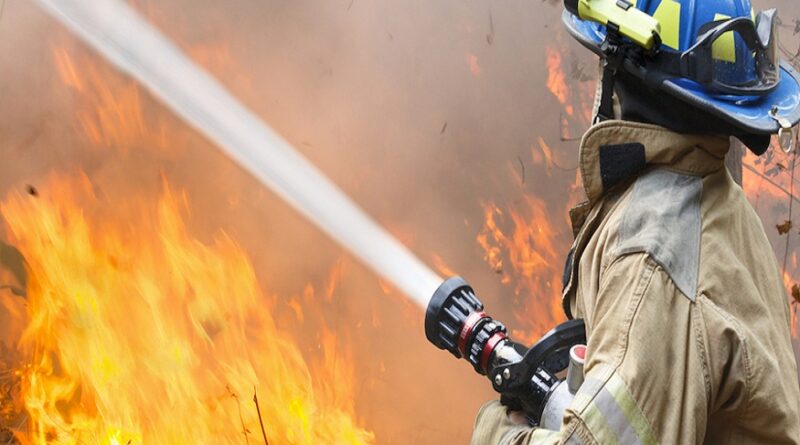How to Pass a Fire Safety Inspection with Proper Extinguisher Maintenance
Fire safety inspections are a crucial part of ensuring that businesses, residential buildings, and public spaces meet fire protection standards. One of the most common reasons properties fail fire inspections is the improper maintenance of fire extinguishers. Regular fire extinguisher maintenance is essential to staying compliant with fire codes and ensuring safety in case of an emergency. In this guide, we’ll discuss everything you need to know about passing a fire safety inspection with proper extinguisher maintenance.
Understanding the Importance of Fire Safety Inspections
Fire safety inspections are conducted by local fire departments or safety officials to assess whether a property meets fire safety regulations. These inspections help identify potential fire hazards, ensure that emergency equipment is in working condition, and verify that fire safety measures are up to date.
Failing an inspection can lead to penalties, fines, or even business closure in extreme cases. Regular fire maintenance and proper servicing of fire extinguishers can prevent such issues and ensure compliance with regulations.
Common Reasons for Failing a Fire Safety Inspection
Before diving into how to maintain fire extinguishers properly, let’s look at some common reasons businesses and property owners fail fire inspections:
- Expired or missing fire extinguishers
- Fire extinguishers that are not fully charged
- Improper extinguisher placement
- Lack of proper signage and accessibility
- Incomplete fire safety records
Addressing these issues with routine fire maintenance services can ensure a smooth fire safety inspection process.
Fire Extinguisher Maintenance Checklist for Passing a Fire Inspection
To pass a fire safety inspection, it’s essential to keep your fire extinguishers in top condition. Here’s a step-by-step guide to maintaining your fire extinguishers:
1. Conduct Regular Fire Extinguisher Inspections
Fire extinguishers should be visually inspected at least once a month to ensure they are in good working condition. During these checks, look for:
- Visible damage, such as dents, leaks, or corrosion
- A clear and readable instruction label
- An unbroken tamper seal
- A fully charged pressure gauge
- No obstructions blocking access to the extinguisher
Regular inspections help detect issues early and allow time for necessary repairs before an official fire safety inspection.
2. Schedule Professional Fire Extinguisher Servicing
Annual professional fire extinguisher service is required by law to ensure that extinguishers function correctly. During servicing, a certified technician will:
- Perform a detailed inspection of the extinguisher’s condition
- Refill or recharge the extinguisher if needed
- Replace damaged or outdated parts
- Ensure compliance with local fire safety regulations
A documented record of all servicing must be maintained and made available during fire inspections.
3. Ensure Proper Placement and Accessibility
Fire inspectors check if fire extinguishers are correctly placed and easily accessible. To comply with regulations:
- Install extinguishers in visible and unobstructed locations
- Place them near exits and fire-prone areas like kitchens or storage rooms
- Ensure they are mounted at the correct height (typically 3.5 to 5 feet above the ground)
- Use proper signage to indicate the location of fire extinguishers
If extinguishers are hard to access or missing from required areas, it could result in a failed inspection.
4. Keep Up-to-Date Maintenance Records
Fire inspectors often request maintenance logs to verify that fire extinguishers are being properly serviced. Keeping detailed records of all fire extinguisher maintenance activities, including inspections and servicing, is crucial.
Your maintenance log should include:
- Date of each inspection and servicing
- Name of the inspector or service provider
- Details of any issues found and corrective actions taken
- Expiration dates for extinguisher refills or replacements
Having organised records readily available during an inspection demonstrates compliance with fire safety regulations.
5. Train Employees on Fire Extinguisher Use
Even if all fire extinguishers are in perfect condition, a business can still fail a fire safety inspection if employees are not trained in using them. Conduct regular fire safety training sessions to ensure that employees know:
- How to locate and operate a fire extinguisher
- The PASS method (Pull, Aim, Squeeze, Sweep)
- When to use a fire extinguisher versus when to evacuate
Fire inspectors may ask for proof of fire safety training, so keep records of training sessions and participant lists.
The Role of Fire Maintenance Services in Inspection Readiness
Partnering with a professional fire maintenance services provider ensures that your fire extinguishers and other fire protection equipment are always inspection-ready. These professionals offer:
- Monthly and annual fire extinguisher inspections
- Fire extinguisher refilling and replacements
- Emergency repairs and servicing
- Fire safety compliance consultations
By outsourcing your fire maintenance to experts, you can focus on your business while ensuring that fire safety regulations are met.
Final Thoughts
Proper fire extinguisher maintenance is crucial for passing fire safety inspections and keeping people and property safe. By following a regular maintenance schedule, keeping detailed records, ensuring proper placement, and investing in professional fire maintenance services, businesses and property owners can avoid fines, improve safety, and gain peace of mind.

